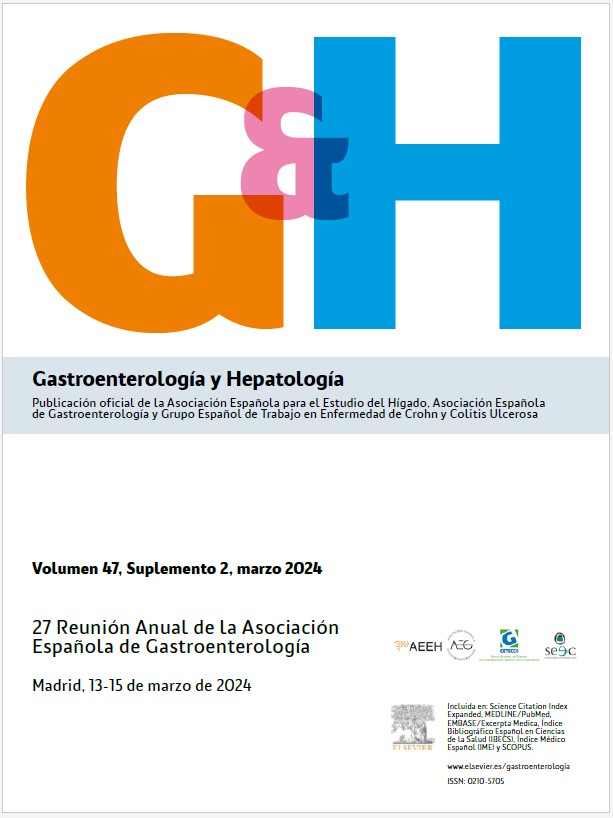P-89 - EFFICACY OF ETRASIMOD ON SYMPTOMATIC RELIEF IN PATIENTS WITH ULCERATIVE COLITIS: AN ANALYSIS OF THE PHASE 3 ELEVATE UC 52 AND ELEVATE UC 12 TRIALS
1Hospital Universitario de La Princesa-Instituto de Investigación Sanitaria Princesa IIS-Princesa-Universidad Autónoma de Madrid UAM-Centro de Investigación Biomédica en Red de Enfermedades Hepáticas y Digestivas CIBEREHD, Gastroenterology, Madrid. 2IRCCS Humanitas Research Hospital- Rozzano, IBD Center, Milan, Italy. 3Guy’s and St Thomas’ NHS Foundation Trust, Gastroenterology, London, United Kingdom. 4King’s College London, School of Immunology & Microbial Sciences, London, United Kingdom. 5Hôpital Saint Louis-Université Paris, Gastroenterology, Diderot, France. 6Icahn School of Medicine- Mount Sinai, Feinstein IBD Center, New York, USA. 7Pfizer AG, Global Clinical Development, Zurich, Switzerland. 8Pfizer Inc, Biostatistics, Collegeville- Pennsylvania, USA. 9Pfizer Inc, Biostatistics, New York, USA. 10Pfizer Inc, Global Medical Affairs- Gastroenterology, Collegeville-Pennsylvania, USA. 11Pfizer Inc, Global Health Economics & Outcomes Research- Inflammation & Immunology, New York, USA. 12Pfizer Inc, Global Medical Affairs-Gastroenterology, Kirkland- Quebec, Canada. 13University of Calgary, Inflammatory Bowel Disease Unit- Division of Gastroenterology and Hepatology, Calgary-Alberta, Canada.
Introduction: Patient-reported outcomes such as stool frequency (SF) and rectal bleeding (RB) are important measures of ulcerative colitis (UC) activity and treatment effect. Etrasimod is an investigational, once-daily, oral, selective sphingosine 1-phosphate receptor 1,4,5 (S1P1,4,5) modulator in development for the treatment of moderately to severely active UC. We evaluated RB and SF subscores to assess symptomatic relief in the ELEVATE UC phase 3 programme.
Methods: In ELEVATE UC 52 (NCT03945188) and ELEVATE UC 12 (NCT03996369), patients (16-80 years) with moderately to severely active UC were randomised 2:1 to once-daily etrasimod 2 mg or placebo (PBO). ELEVATE UC 52 utilized a treat-through design comprising a 12-week induction period followed by a 40- week maintenance period. ELEVATE UC 12 comprised a 12-week induction period. A key secondary endpoint was the proportion of patients with symptomatic remission (SF = 0 [or = 1 with a ≥ 1-point decrease from baseline] and RB = 0) at week 12 and at week 52. RB and SF subscores, achievement of symptomatic remission, complete symptomatic remission (SF = 0 and RB = 0), and symptomatic response (≥ 30% decrease from baseline in composite RB/SF subscores) were assessed at each visit. Achievement of symptomatic remission was also summarized by subgroups in patients with prior biologic/Janus kinase inhibitor (bio/JAKi) use (yes [1, > 1], no) and baseline corticosteroid use (yes, no). All test p-values are not adjusted for multiplicity.
Results: More etrasimod- vs. PBO-treated patients achieved symptomatic remission by week 2 in ELEVATE UC 52 (15.3 vs. 8.9%; p = 0.049) and week 4 in ELEVATE UC 12 (27.5 vs. 16.1%; p = 0.007). Symptomatic remission increased in etrasimod- vs. PBO-treated patients at each time point through week 12 in both ELEVATE UC 52 (46.0 vs. 21.5%; p < 0.001) and ELEVATE UC 12 (46.8 vs. 29.5%; p = 0.001) and was maintained through week 52 in ELEVATE UC 52 (43.4 vs. 18.5%; p 1).
Conclusions: In this analysis, symptomatic relief was achieved by a greater proportion of patients treated with etrasimod vs. PBO as early as week 2 and was sustained through week 52. At week 2, symptomatic response and improvements in RB and SF subscores were observed. The greatest benefits were seen in patients who had no prior exposure to bio/JAKi or 1 prior bio/JAKi therapy.









